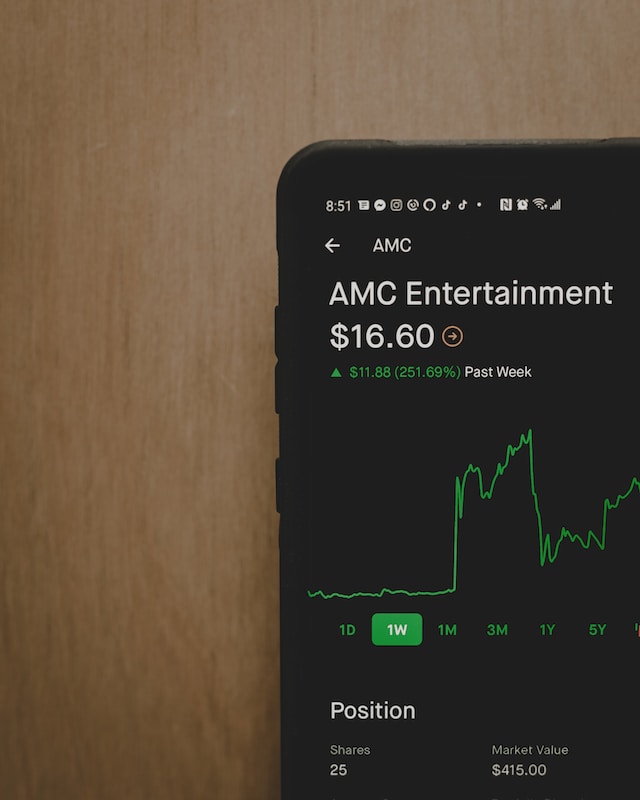Do you know how to invest in Nifty 50 index and wonder if it’s a good investment option? As one of the leading stock market indexes in India, the Nifty 50 can be an attractive choice for investors looking to put their money into the country’s top companies.
In this beginner’s guide, we’ll cover everything you need to know about investing in the Nifty 50 index. From understanding what the index is to how to invest, the benefits and risks, and tips for getting started, read on to become a Nifty 50 expert!
What is the Nifty 50 Index?
The Nifty 50 is a stock market index that represents the weighted average of 50 of the largest Indian companies listed on the National Stock Exchange (NSE). It accounts for 13 sectors of the Indian economy and is a key benchmark for tracking the overall performance of India’s stock markets.
Some key facts about the Nifty 50:
- Comprises 50 prominent blue chip companies listed on the NSE
- Covers major sectors like IT, banking, automobile, pharmaceuticals, FMCG, etc
- Represents about 66% of the free float market capitalization of the stocks listed on NSE
- Started on November 3, 1995 with a base value of 1000
- Ownership includes many leading Indian conglomerates and multinational companies

Simply put, the Nifty 50 is like a basket containing shares of the 50 most valuable companies traded on the NSE. It serves as an indicator of how well India’s largest and most influential companies are performing.
How to Invest in Nifty 50?
Here are some of the reasons why investing in the Nifty 50 index can be advantageous:
1. Diversification
The Nifty 50 provides instant diversification across sectors and market capitalizations. With just one investment, you gain exposure to 50 companies instead of putting all your eggs in one basket. This dilution of risk is a major benefit of index investing.
2. Low Costs
Investing in an index fund that tracks the Nifty 50 is much cheaper than buying individual stocks. Index funds have lower operating costs and fewer brokerage fees. This results in higher returns in the long run.
3. Long-term Growth
Historically, the Nifty 50 has delivered consistent long-term returns, with an average annual growth rate of about 12% over the past 20 years. Many experts consider it as a proxy for the Indian economy. So as the economy grows, so does the index.
4. Dividend Income
The Nifty 50 companies are mature, established businesses that pay out regular dividends. Index investing provides a passive way to earn dividend income from blue chip stocks.

5. Transparency and Simplicity
The Nifty 50 has a clear, rules-based methodology for inclusion of companies. It is easy to track and understand as an investor. The transparency and simplicity make index investing appealing for many.
6. Liquidity
The stocks included in the Nifty 50 have high liquidity on the exchanges. This makes it easy to buy and sell index funds without much impact cost. Liquidity is crucial for large investors and institutions.
By harnessing the combined strength of its 50 constituents, the Nifty 50 offers stability and steady compounding returns over long investment horizons.
How to Invest in the Nifty 50 Index
Now that you know why the Nifty 50 can be a smart investment choice, let’s look at the ways you can gain exposure to the index:
1. Nifty 50 Index Funds
This is the most popular and convenient way to invest in the Nifty 50. Index funds like UTI Nifty Index Fund, HDFC Index Fund – Nifty 50 Plan, ICICI Prudential Nifty 50 Index Fund, etc. replicate the index by investing in all the 50 stocks in the same weightage. They offer high liquidity and very low expenses.
2. Nifty 50 Exchange Traded Funds (ETFs)
ETFs are similar to index funds but trade on the stock exchanges like stocks. Each unit of an ETF represents a basket of the underlying 50 stocks. They provide real time pricing and can be traded anytime during market hours. Some popular Nifty 50 ETFs are Nippon India ETF Nifty 50, HDFC Nifty 50 ETF, ICICI Prudential Nifty 50 ETF, etc.
3. Nifty 50 Index Derivatives
For traders and speculators, the Nifty 50 index options and futures contracts offer a means to take leveraged exposure on the index. However, derivatives come with high risk and are not ideal for long-term investors.

4. Stocks of Nifty 50 Companies
You can also directly buy stocks of the companies constituting the Nifty 50. But this would require more research and monitoring compared to passive index investing. You may miss out on proper diversification too.
Index funds and ETFs offer the simplicity and diversification benefits of the Nifty 50 at low costs. So they are the easiest way to invest for most investors.
Risks of Investing in the Nifty 50
While the Nifty 50 can offer attractive returns, it also comes with some risks to consider:
- Market risk – The Nifty 50 is vulnerable to stock market cycles, crashes and volatility. Investors have to be resilient enough to withstand short-term downturns.
- Concentration risk – The top 3 sectors make up for over 50% weightage in the index. So any sector-specific issues can impact Nifty 50 returns.
- Liquidity risk – Though unlikely, illiquidity in constituent stocks can affect the index funds/ETFs tracking the Nifty 50.
- Passive investing risk – The index composition is rules based. There is no active fund manager intervention to benefit from company-specific opportunities.
- Risks pertaining to individual companies – Though diversified, corporate governance issues or earnings disappointments in larger index constituents can drag down overall returns.

However, many of these risks can be managed through adherence to asset allocation, periodic rebalancing and staying invested for long periods. Getting professional advice is recommended before investing significant capital in index investing.
Tips for Investing in the Nifty 50
Here are some tips that can help you succeed with Nifty 50 investing:
- Choose an index fund or ETF with low tracking error and expenses.
- Maintain long-term outlook of 5 years or more for optimal results.
- Reinvest dividends from index funds to benefit from compounding.
- Use SIPs to invest regularly in small amounts and take advantage of rupee cost averaging.
- Rebalance portfolio periodically to maintain optimal asset allocation.
- Utilize index investing as passive core component and add active funds for satellite exposure.
- Don’t panic during market declines. Stay the course.
- Monitor portfolio periodically but don’t track daily fluctuations obsessively.
- Consider your risk appetite and investment time frame before exposure levels.
By following these tips, you can build wealth steadily through disciplined investing in the Nifty 50 index.
Conclusion
For Indian investors, the Nifty 50 can form the core equity component in a diversified investment portfolio. Representing the country’s largest blue chip companies, it provides a low-cost and transparent way to participate in India’s growth story.
Though not without risks, the Nifty 50 offers attractive long-term return potential that can help meet financial goals like retirement, children’s education, etc. Whether you choose index funds or ETFs, stay invested with a 5+ year horizon to ride out the market’s ups and downs.
So don’t hesitate, get started with investing in the Nifty 50 today to secure your financial future with the power of India’s leading companies!

FAQs about Investing in Nifty 50
Q: How many stocks are there in the Nifty 50 index?
A: There are 50 stocks constituents in the Nifty 50 index.
Q: Which sectors dominate the Nifty 50 index?
A: Financial services, IT, consumer goods, oil & gas, auto and pharmaceutical sectors have the highest weightage in the Nifty 50.
Q: What is the minimum investment amount for Nifty 50 index funds?
A: Most Nifty 50 index funds have a minimum investment amount of ₹500-1000.
Q: How do I invest in the Nifty 50 index through SIP?
A: You can invest in Nifty 50 index funds or ETFs through Systematic Investment Plans (SIPs) of amounts as low as ₹500 per month.
Q: What is the price of the Nifty 50 index today?
A: The Nifty 50 price or level keeps changing everyday based on the stock prices of its constituents. You can find the real-time index levels on NSE’s website or business news portals.
Q: How is the Nifty 50 index calculated?
A: The Nifty 50 is computed using a free float market capitalization weighted methodology. The constituents’ market caps determine their weights in the index.
Q: Can I directly invest in the Nifty 50?
A: No, you cannot directly invest in the Nifty 50 index itself. You have to invest through index funds or ETFs that track the index.
Q: What is the best way to invest in the Nifty 50 for a long term investor?
A: The best way is to invest in a low cost Nifty 50 index fund through monthly SIPs over a long period of 5 years or more.








